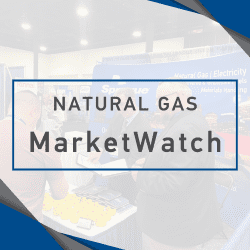Recap: Oil futures fell on Friday, pressured by the spread of the coronavirus cases, which hit a record in the U.S. of 100,000 new cases for the second straight day. As some countries introduce new restrictions on business and consumer activity, worries over their impact on demand increased. This, along with diminishing prospects for a U.S. stimulus package weighed on prices. December WTI fell $1.65, or 4.6%, to settle at $37.14 a barrel, while January Brent slipped $1.48, or 3.6%, to settle at $39.45 a barrel. Crude oil futures posted weekly gains, with WTI up 3.8% and Brent finishing up 4%. Products also fell, with December RBOB losing $3.15, or 2.8%, to close at $1.0844 a gallon, while December heating oil dipped 2.7 cents, or 2.3%, to $1.1426 a gallon.
Technical Analysis: Oil prices took quite a hit over the past couple of weeks, but managed to rebound from a weekly low of $33.64 on hopes that OPEC+ will roll over production cuts into the first quarter of 2021. This past week’s inventory report also provided support. On the flip side is the coronavirus, which is spreading across the globe. While governments issue a second round of anti-virus measures, prices will most likely be contained. Coming into a fresh week of trading, we aren’t expecting any drastic changes in our view of the market, and therefore expect for this market to remain range bound between $42 and $36.33. A break below $36.33 could see WTI at the $30, while a break above $42 could push WTI toward $44.
Fundamental News: U.S. energy companies this week added oil and natural gas rigs for an eighth consecutive week for the first time since June 2018. Baker Hughes reported that the oil and gas rig count increased by four to 300 in the week ending November 6th. U.S. oil rigs increased by five to 226 this week, the highest level since May, while natural gas rigs fell by 1 to 71.
U.S. frackers are bringing back equipment even as oil prices trade around $40/barrel in a bid to increase production and tap into a backlog of drilled wells left uncompleted (DUCs) when oil prices crashed earlier this year. According to data from consultancy Primary Vision, the number of active hydraulic fracturing fleets has increased by nearly 50% since mid-September to 127, outpacing a 17% increase in the number of active drilling rigs over that same period of time. That count stands at 296. U.S. shale production is expected to fall to 7.7 million bpd in November, down from 9.2 million bpd in February, before prices crashed, according to the U.S. Energy Information Administration. Andy Hendricks, chief executive officer of driller Patterson-UTI Energy said fracking was the first thing to get shut down when oil prices collapsed because it's the most expensive part of drilling and completing a well. When prices rebounded, operators brought back frack crews to complete wells that were drilled but not yet completed. The companies that specialize in well completions, like ProPetro Holding Corp and Liberty Oilfield Services have said they are adding back workers. According to analysis from consultancy Enverus, the U.S. added as many as 1,200 DUCs in May, but began completing wells at a faster rate than rigs could drill them starting around July. In October, operators were burning through DUCs at a rate of about 200 a month.
IIR Energy said U.S. oil refiners are expected to shut in 4.2 million bpd of capacity in the week ending November 6th, increasing available refining capacity by about 163,000 bpd from the previous week. Offline capacity is expected to decline to 3.9 million bpd in the week ending November 13th.
Early Market Call – as of 8:25 AM EDT
WTI – Dec $41.24, up $4.07
RBOB – Dec $1.1919, up 10.75 cents
HO – Dec $1.2457, up 10.31 cents
View the Sprague Refined Products Market Watch Report in a downloadable pdf format by clicking below.
Click to view more online:
Heating Oil Supplier
Diesel Supplier
View market updates
View our refined products glossary
Go to SpraguePORT online










